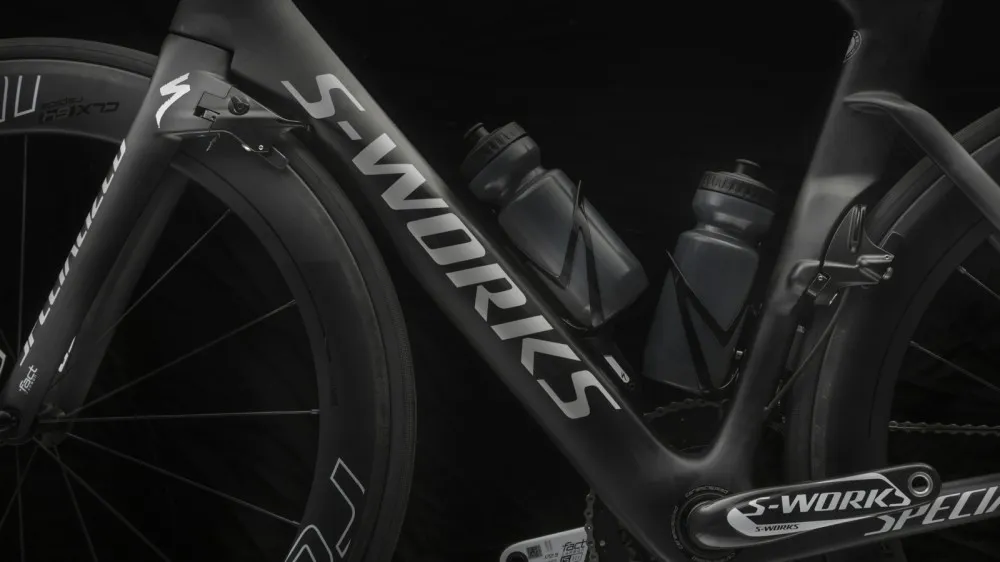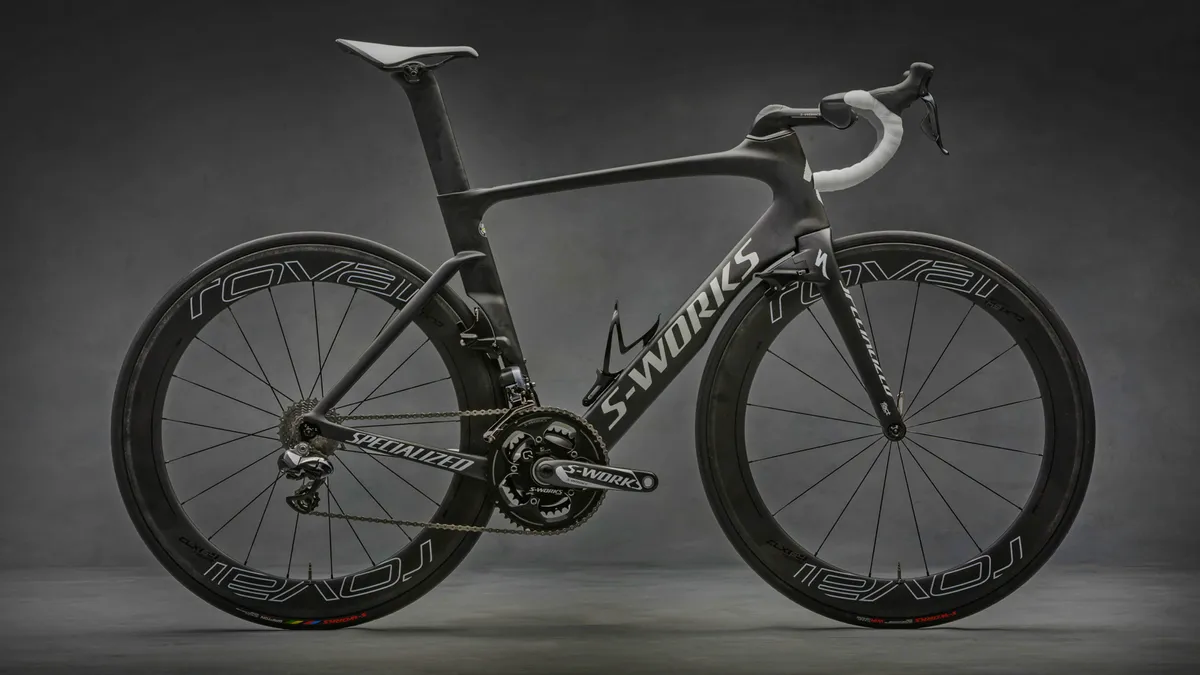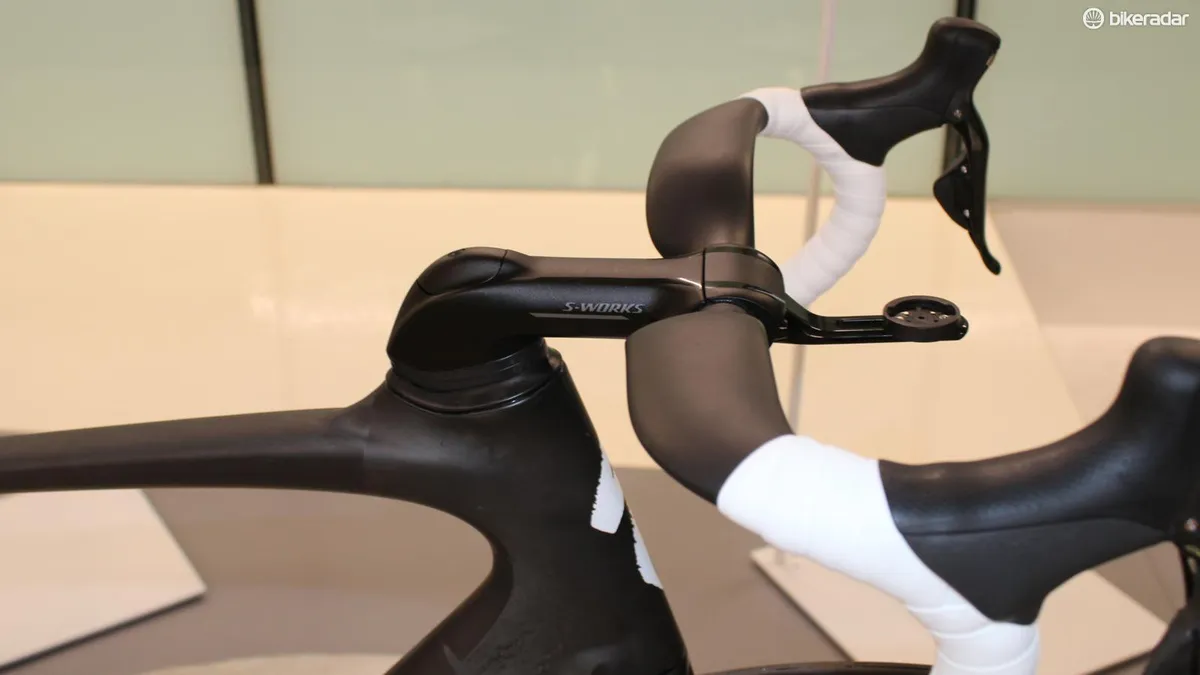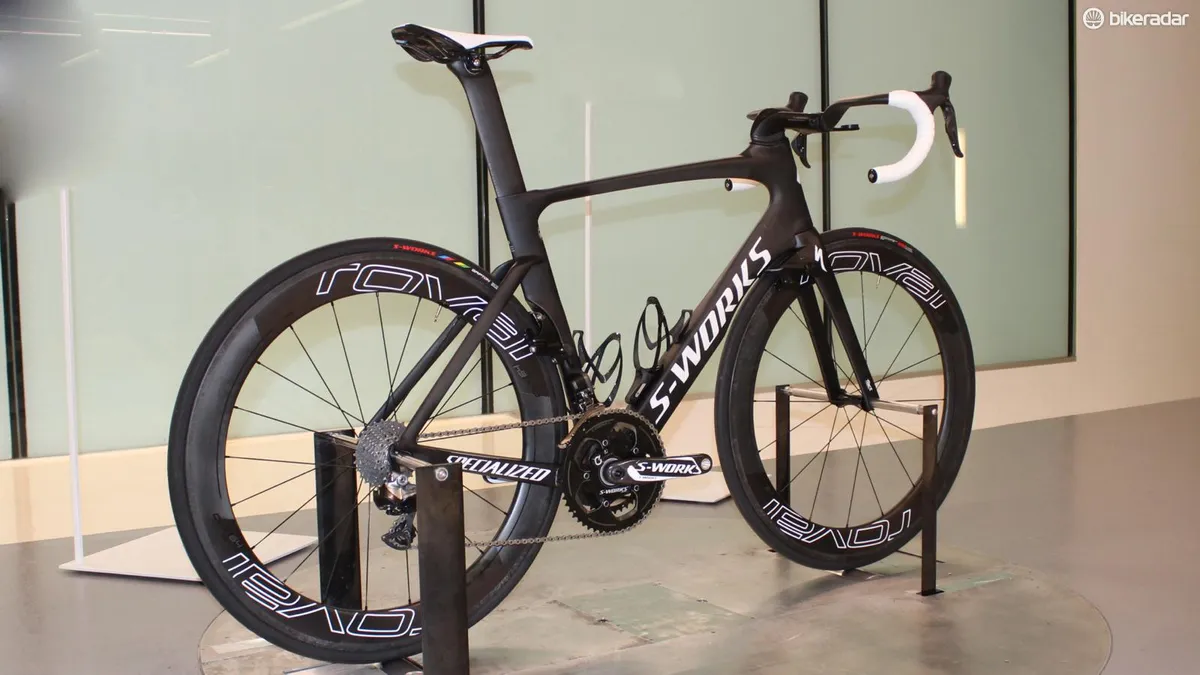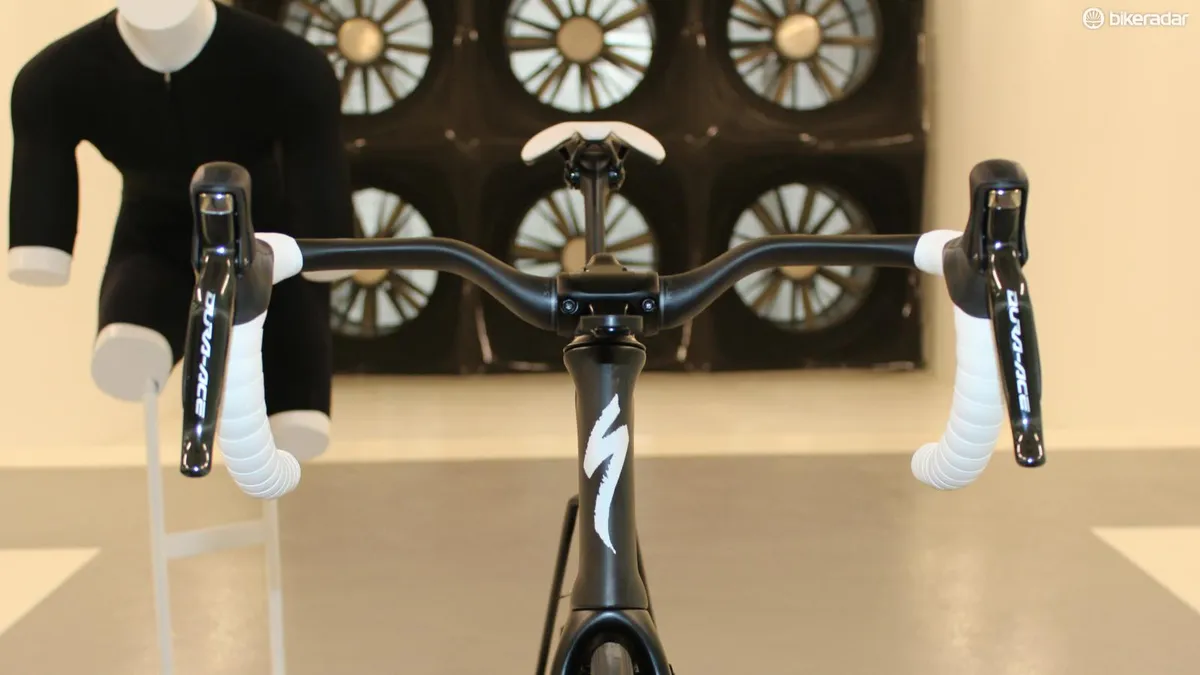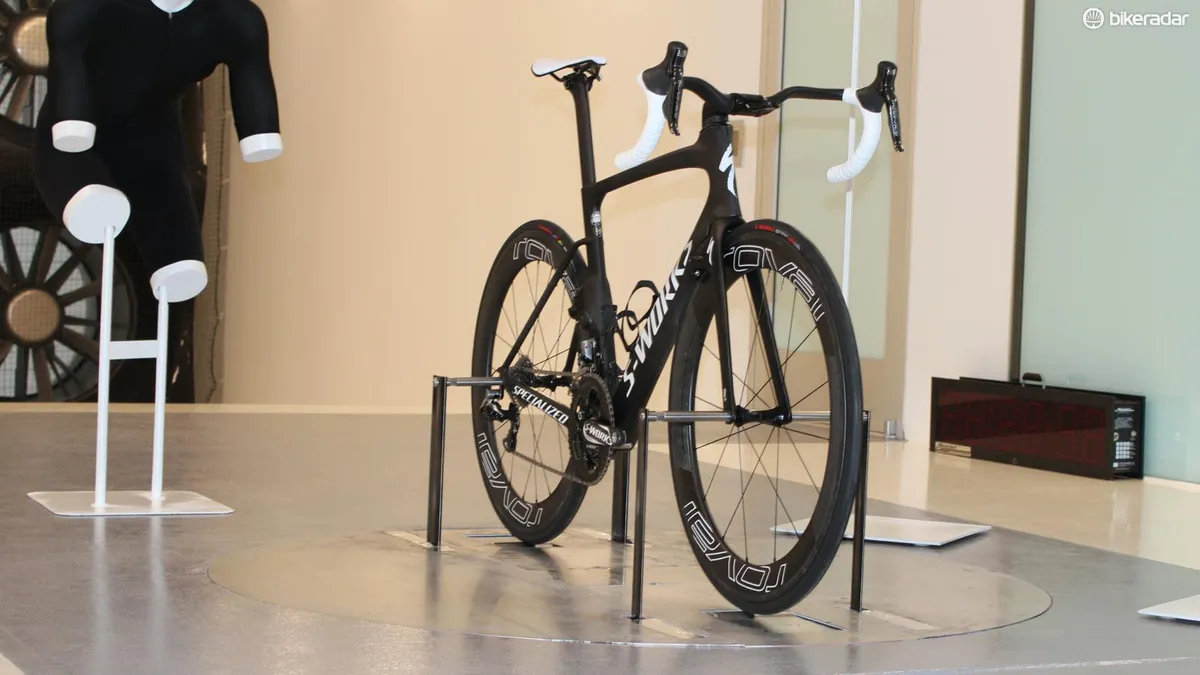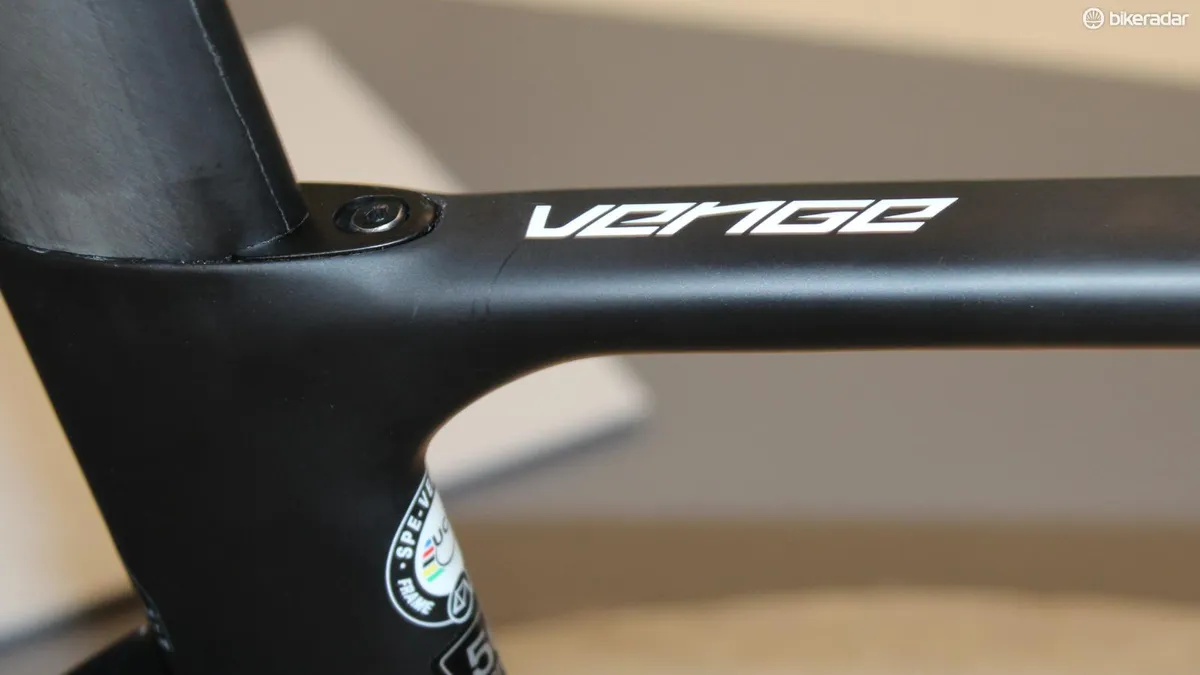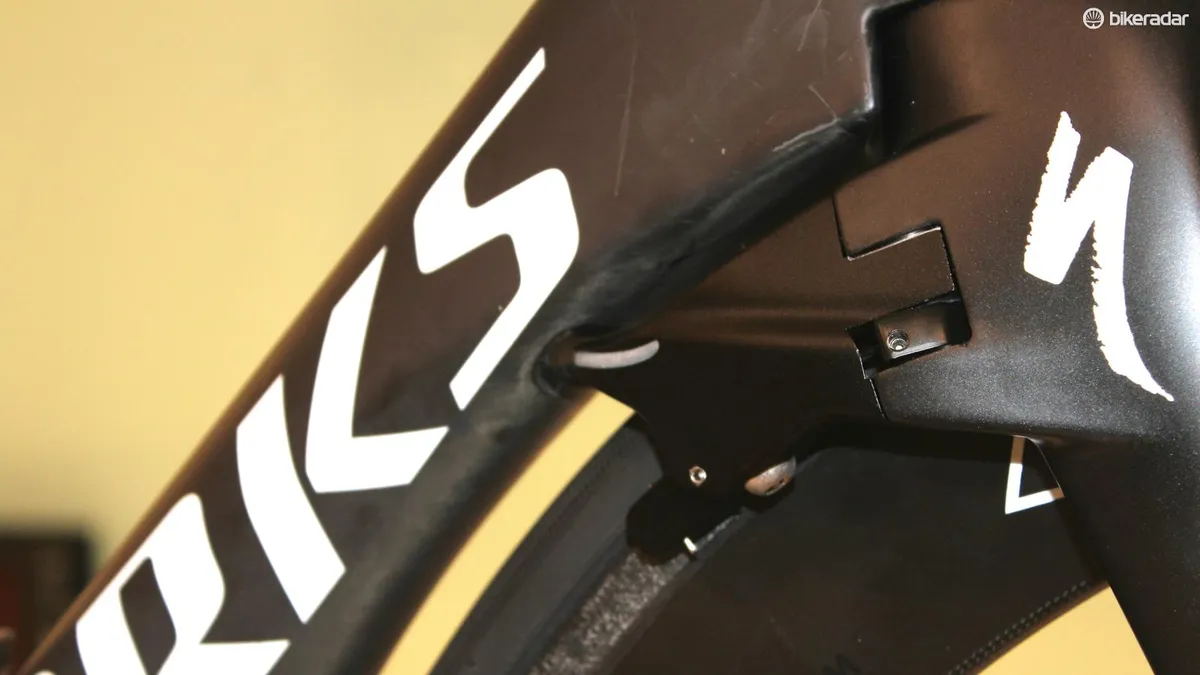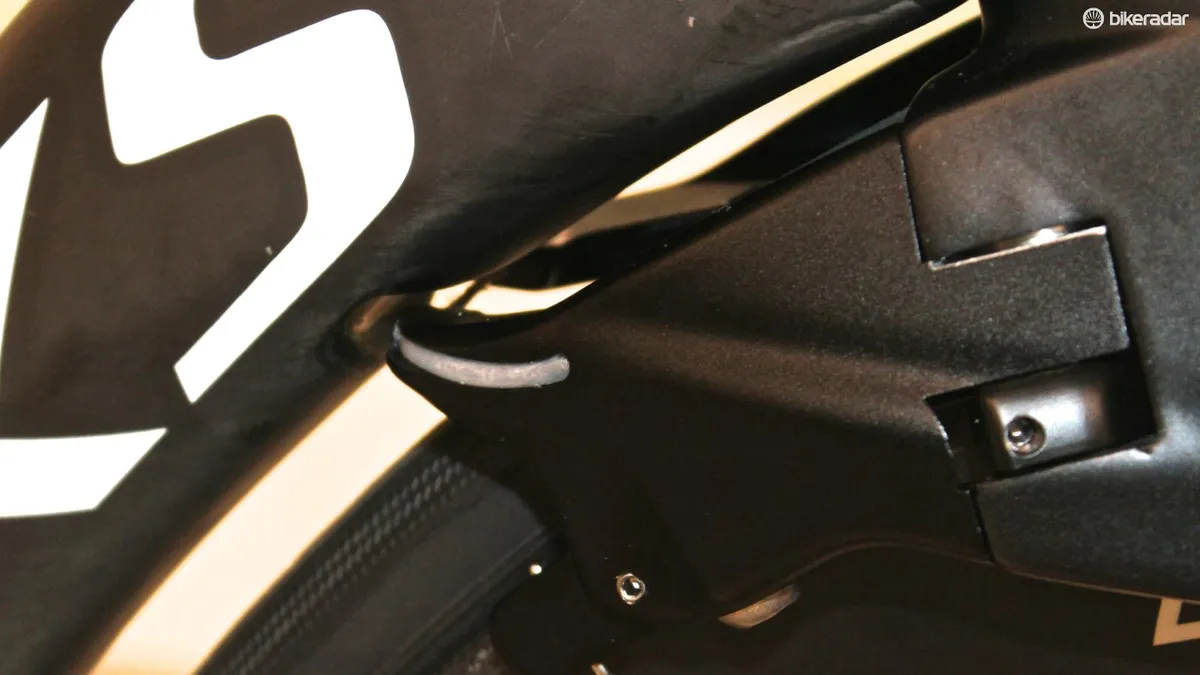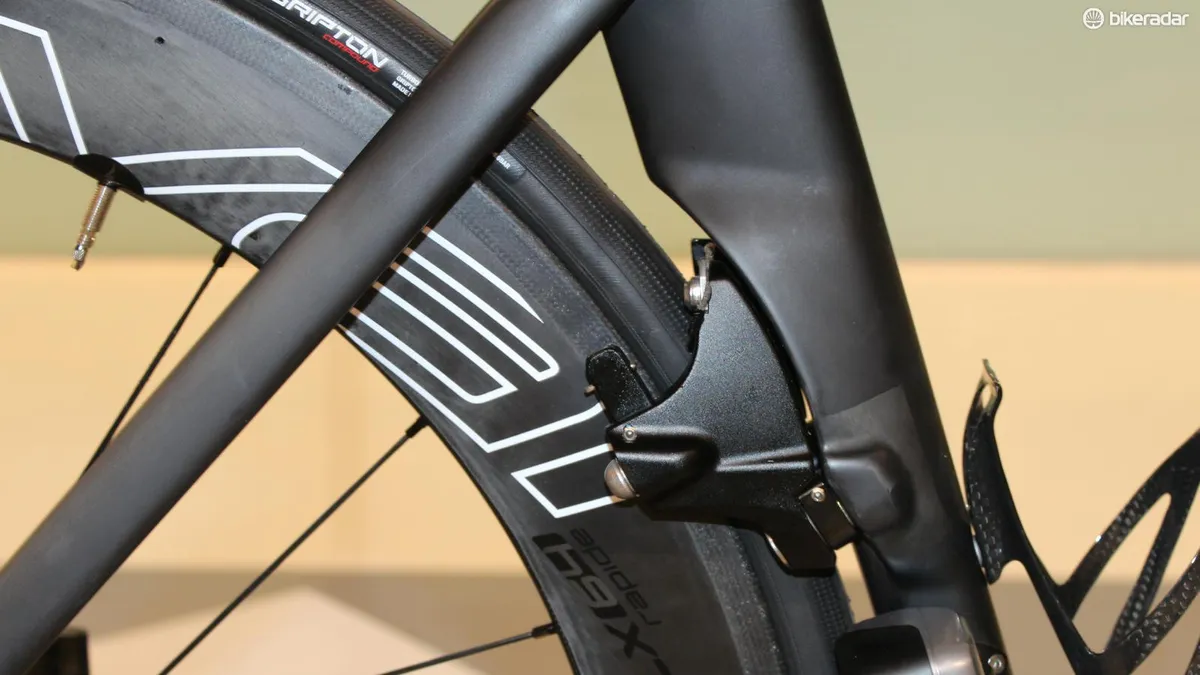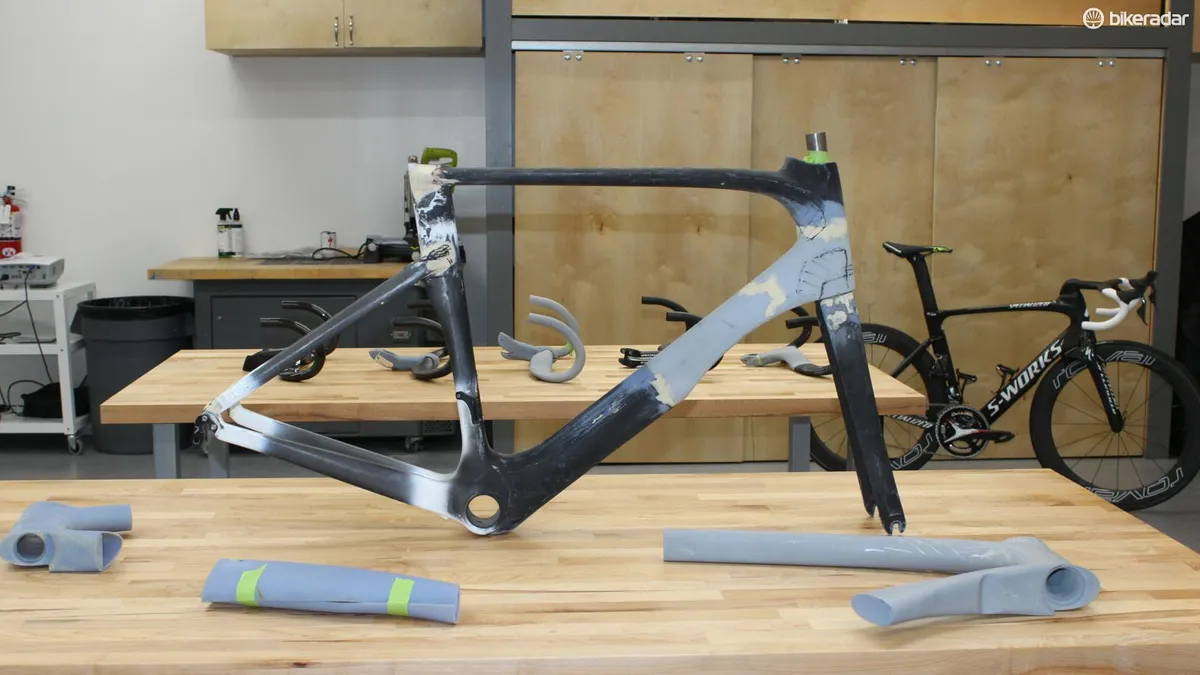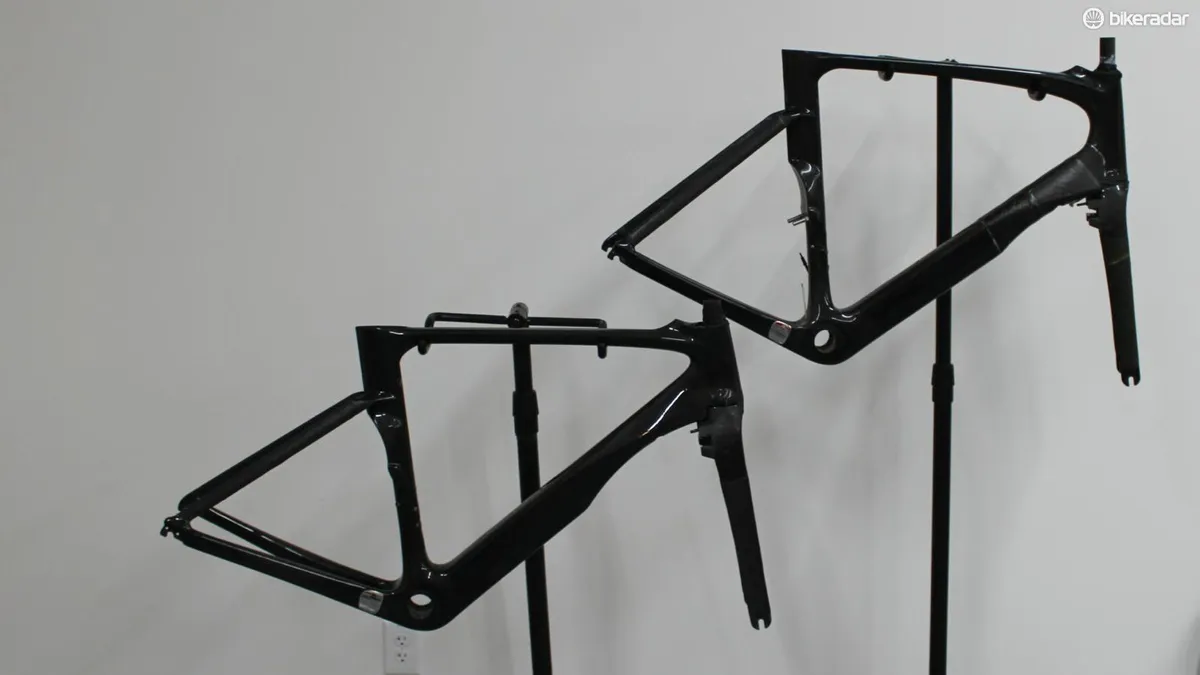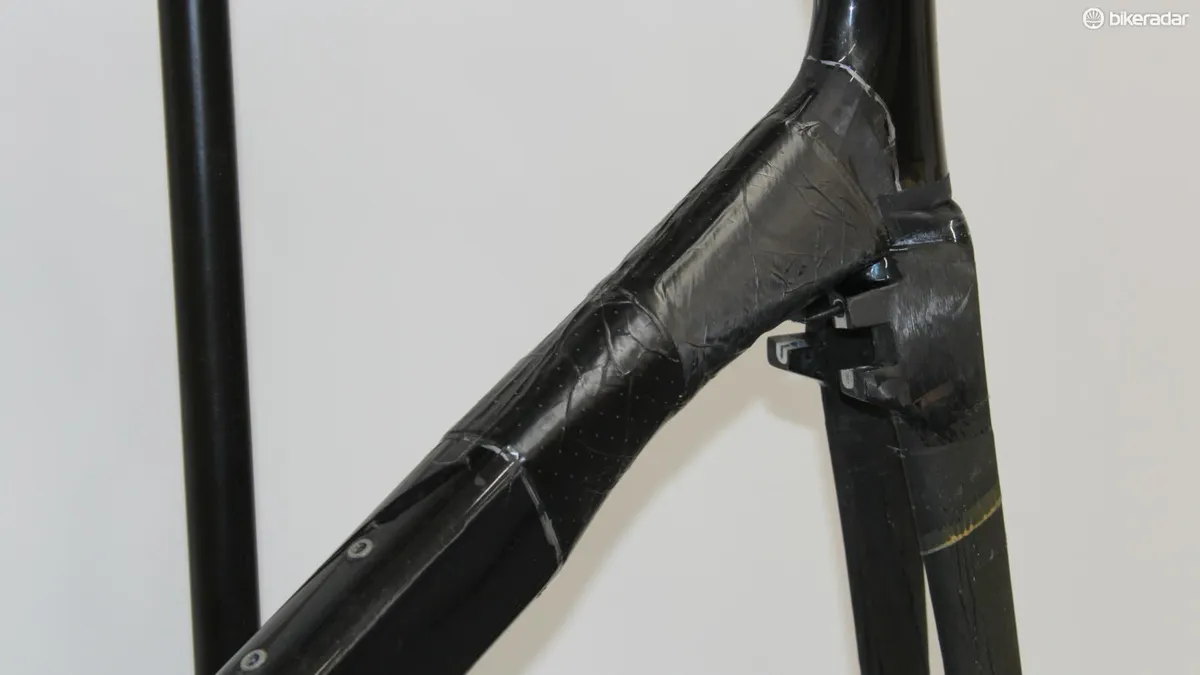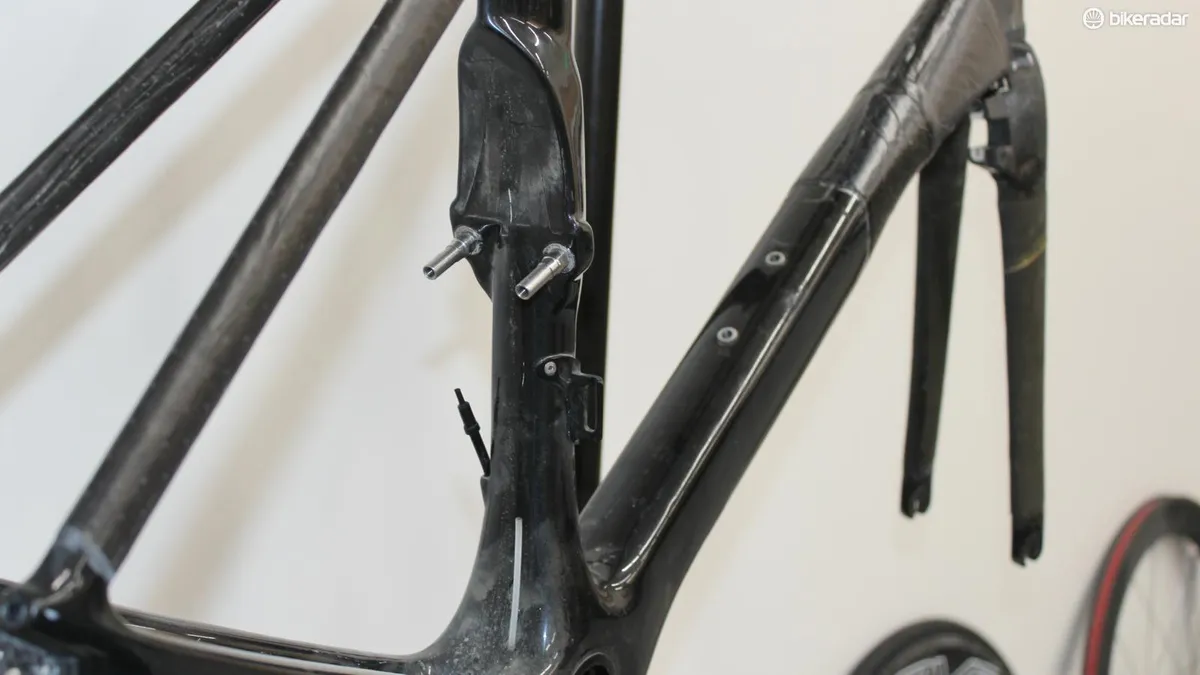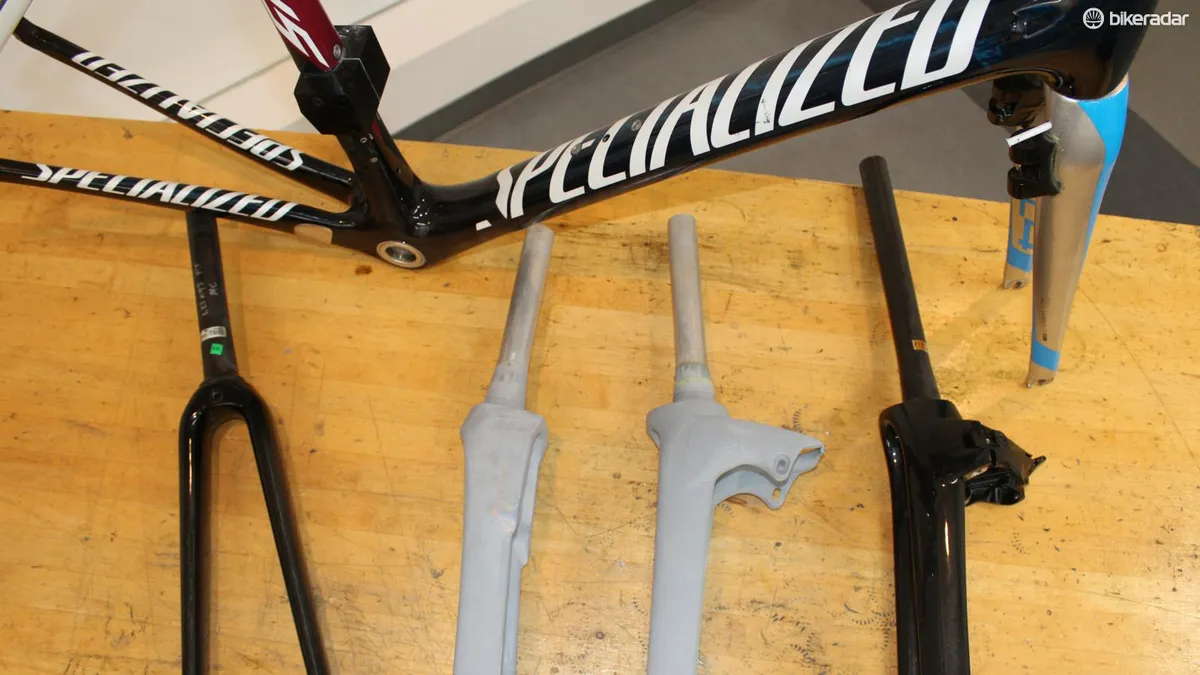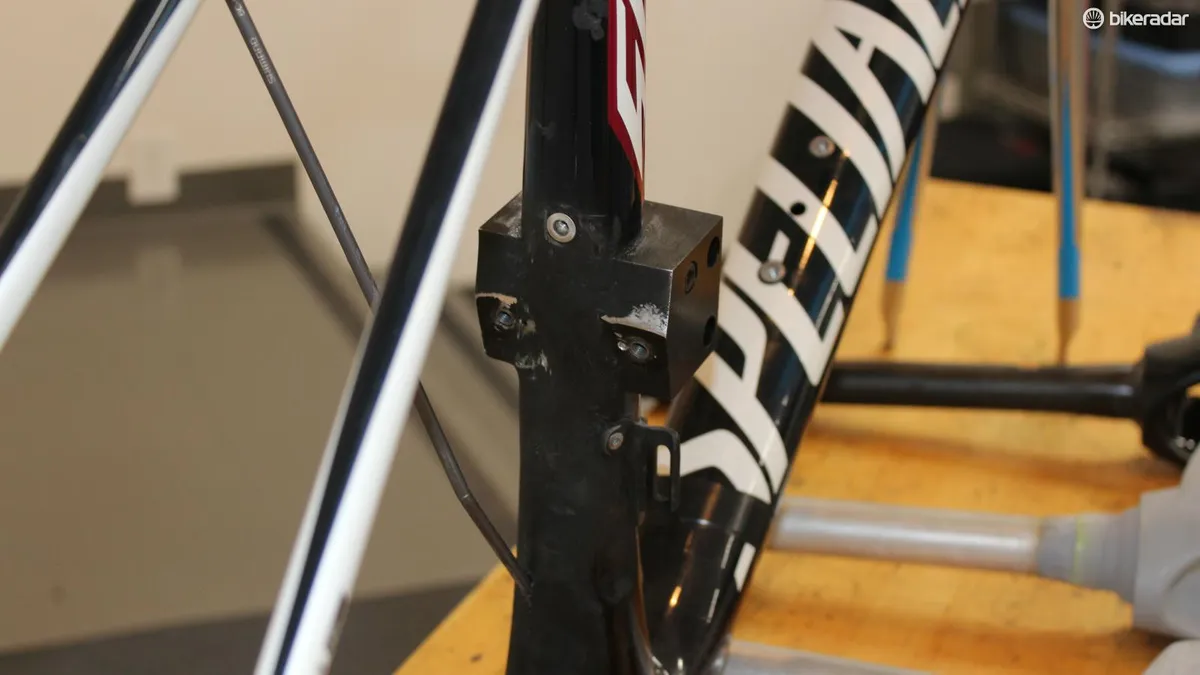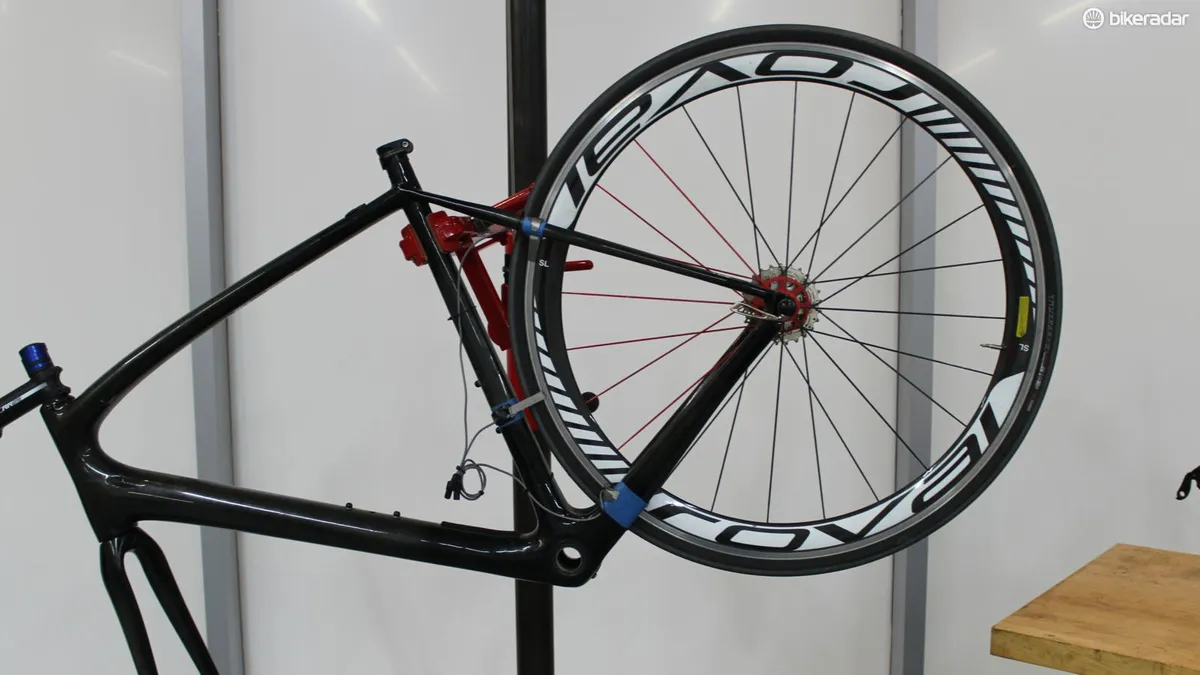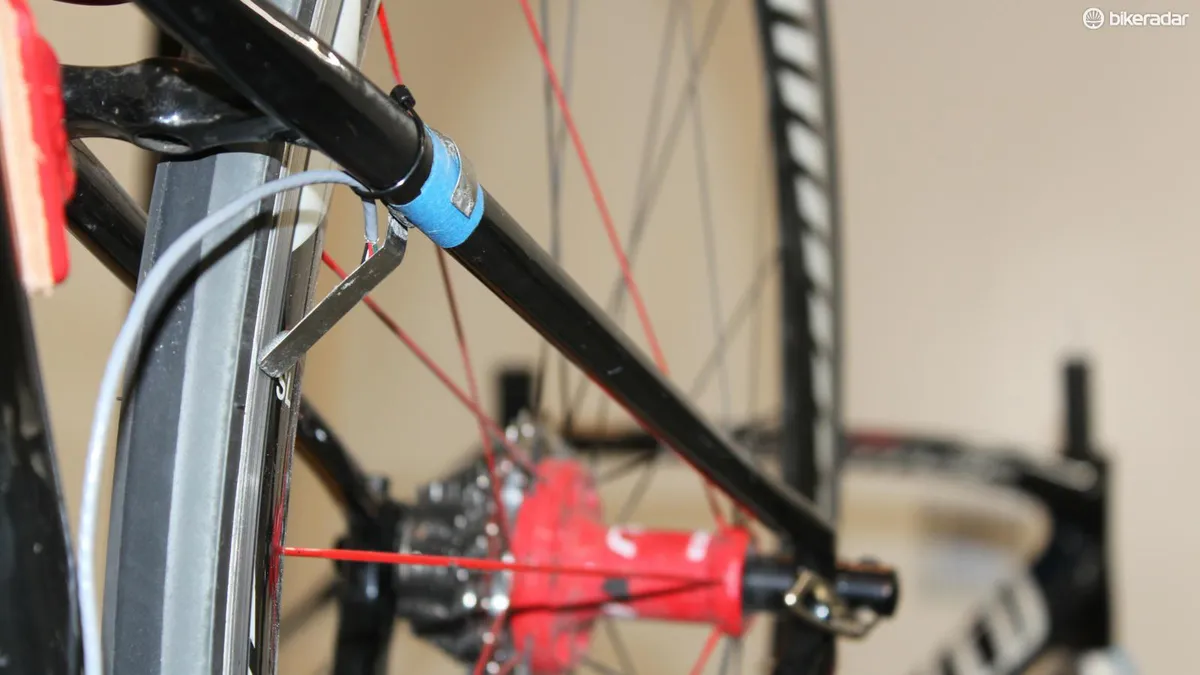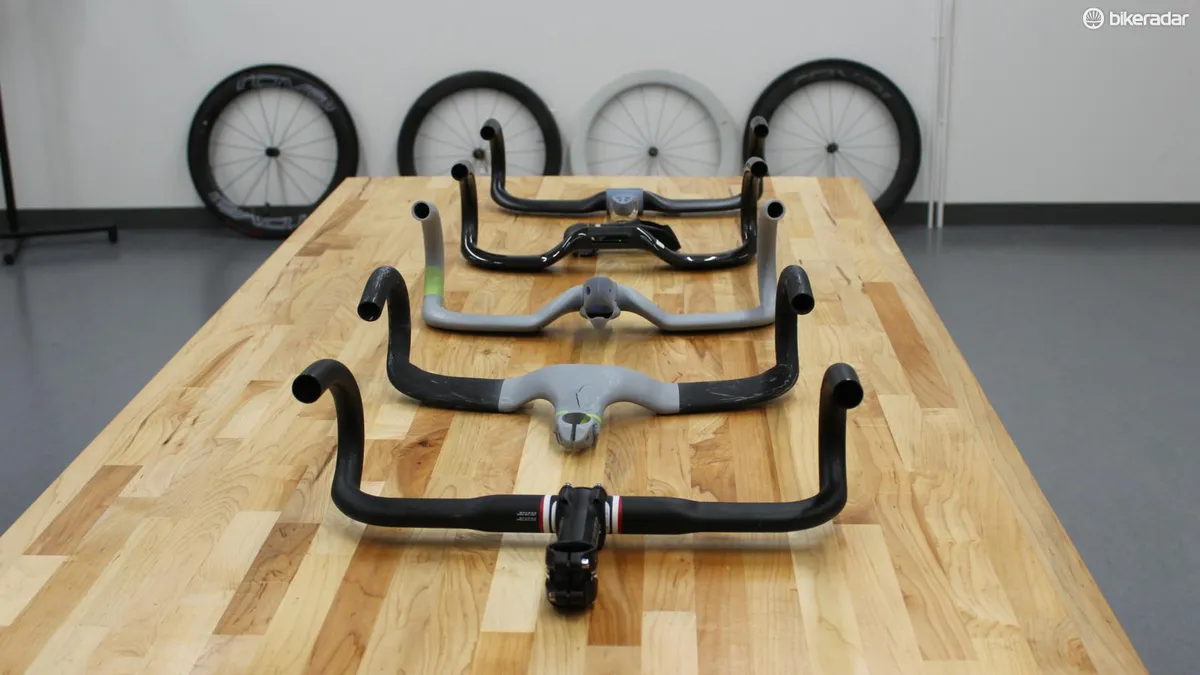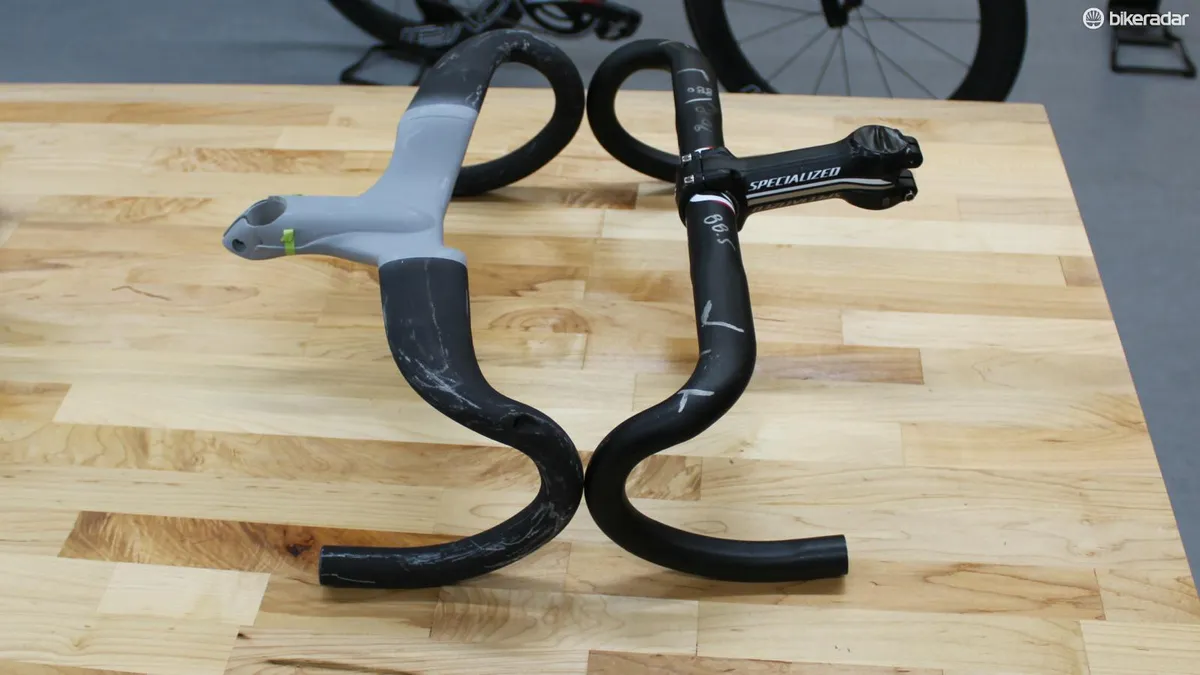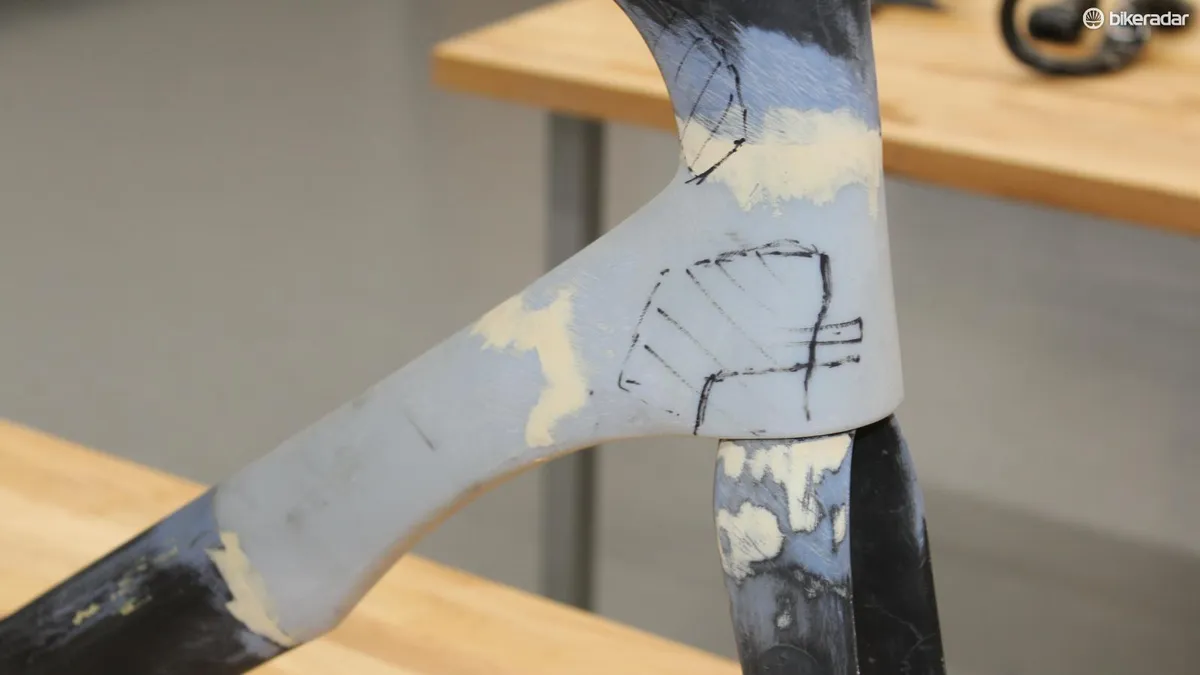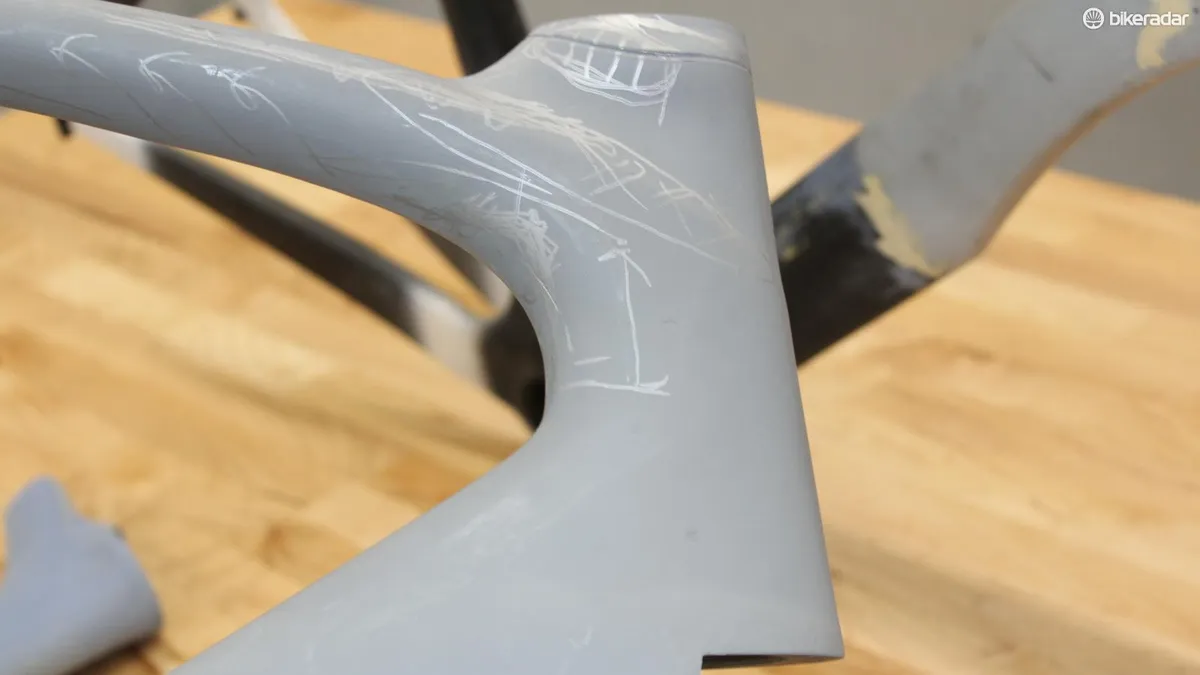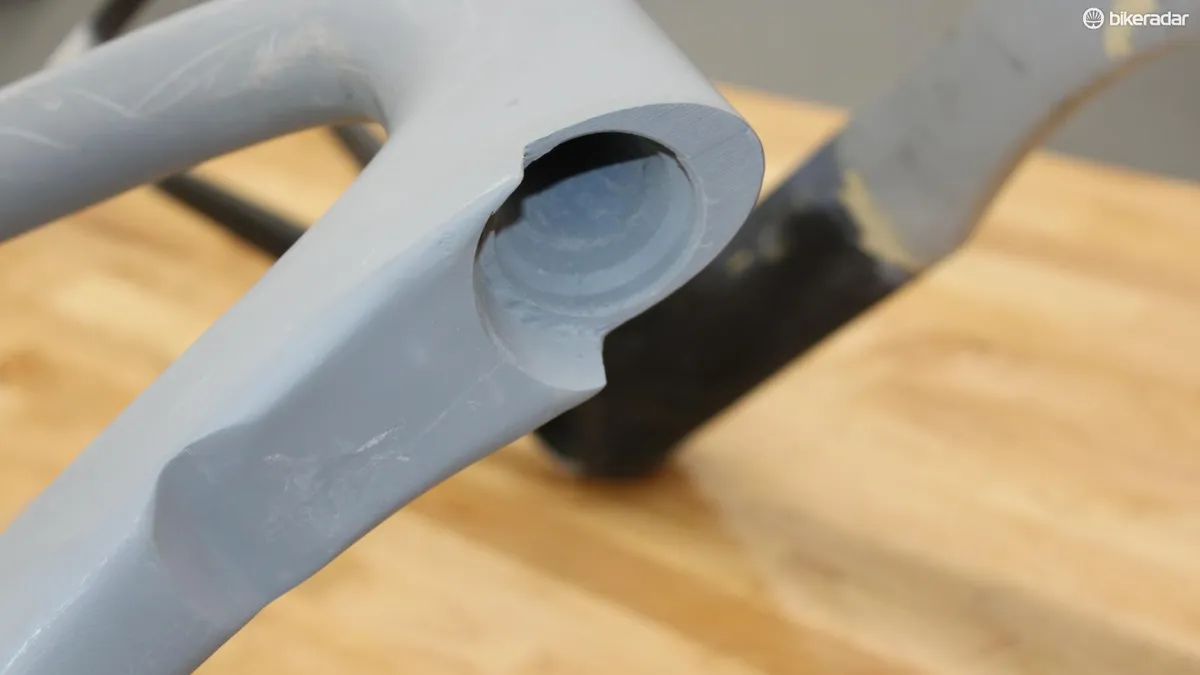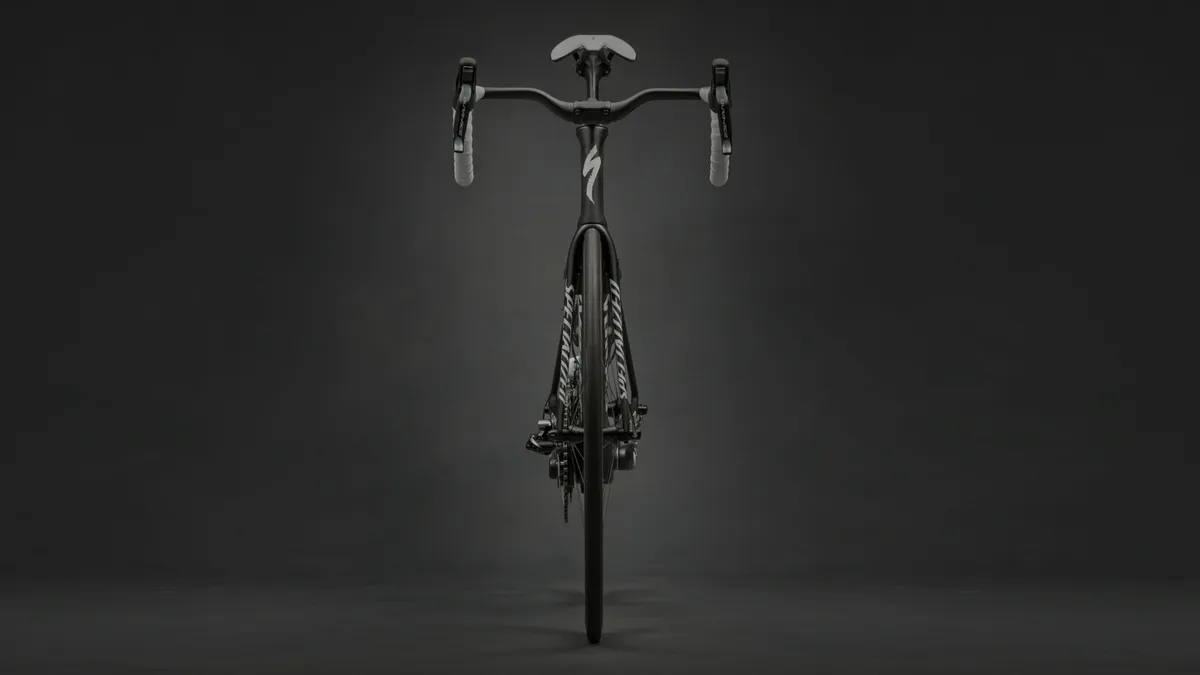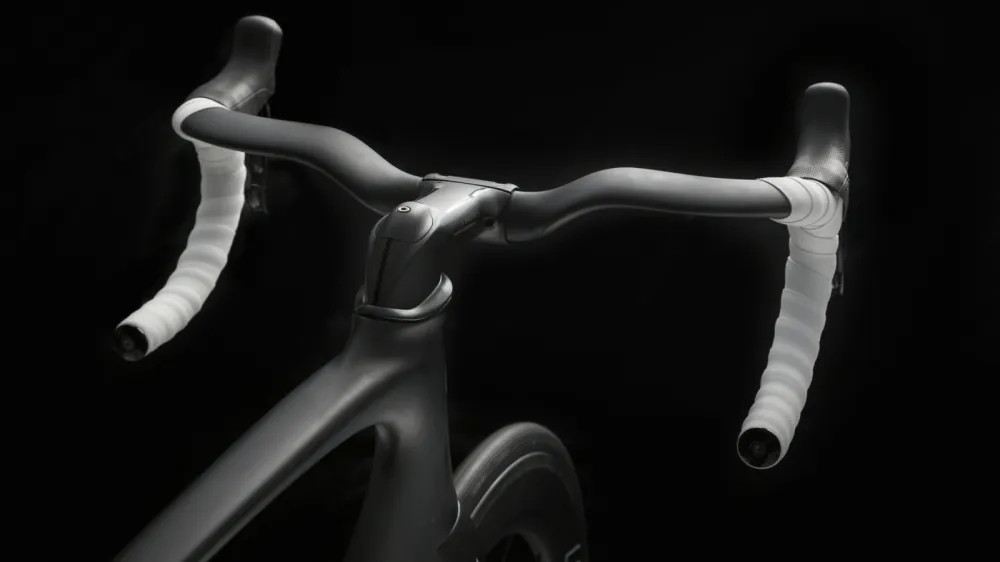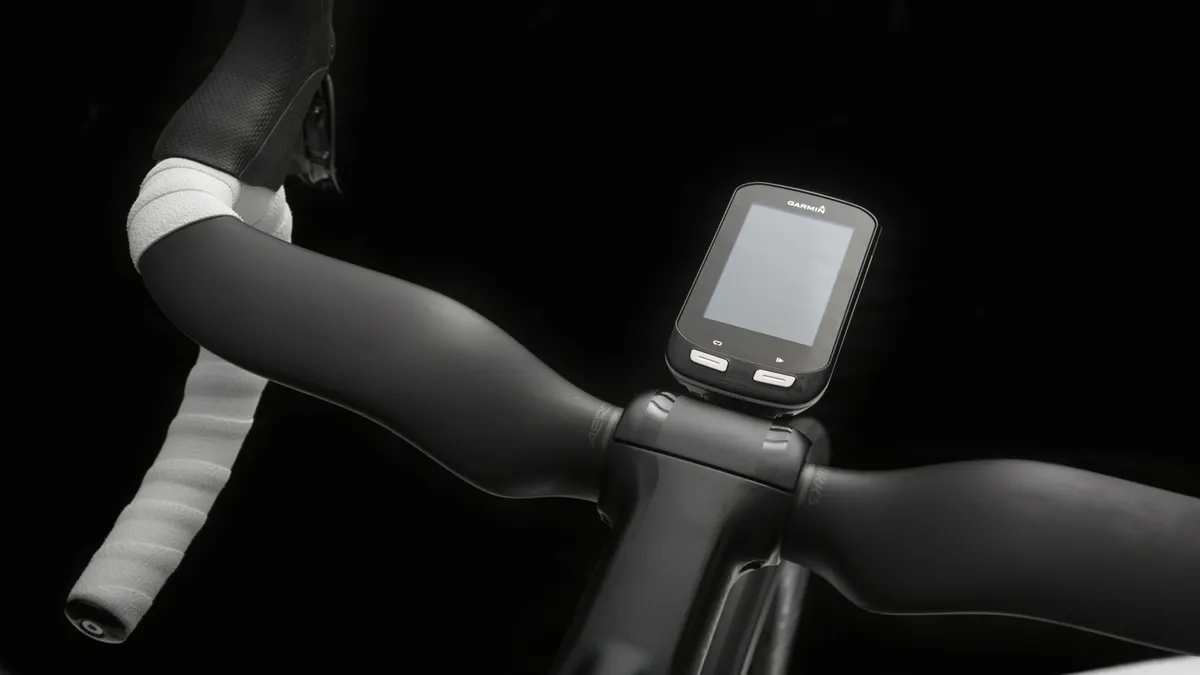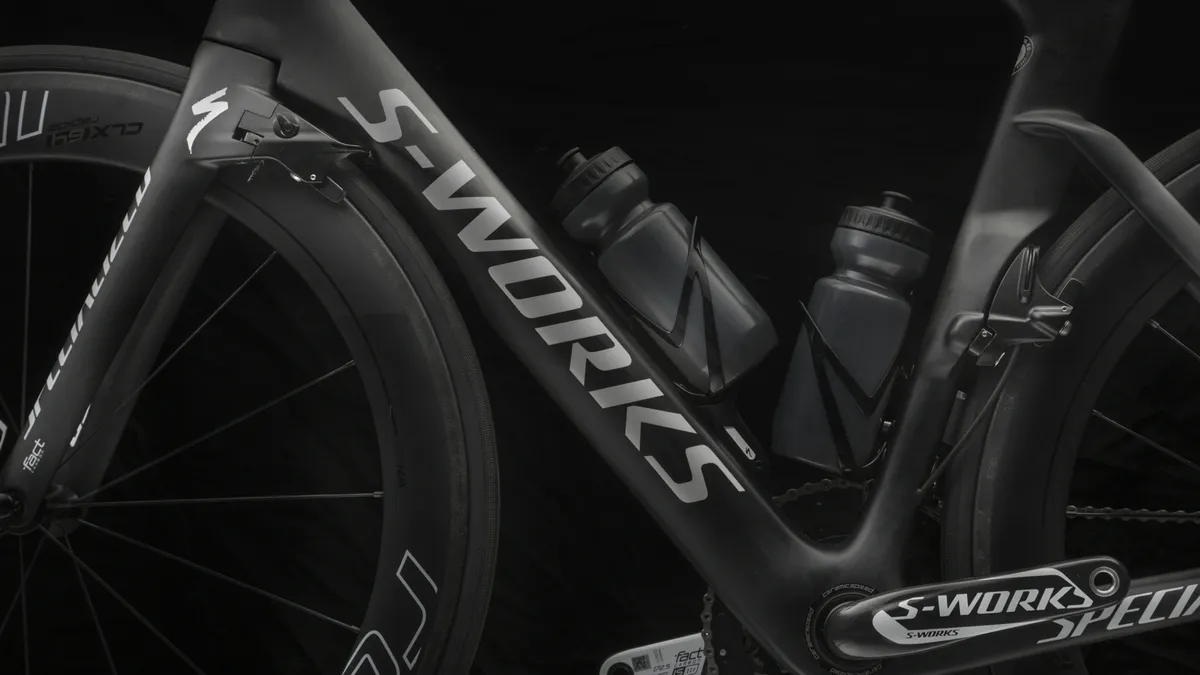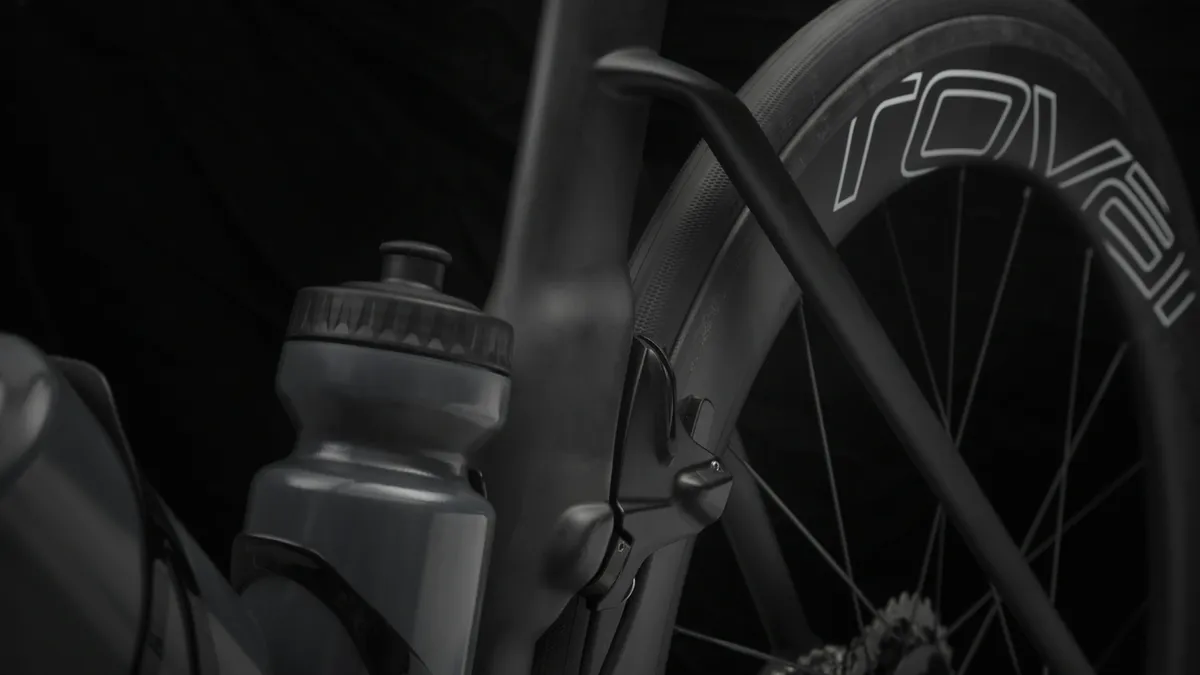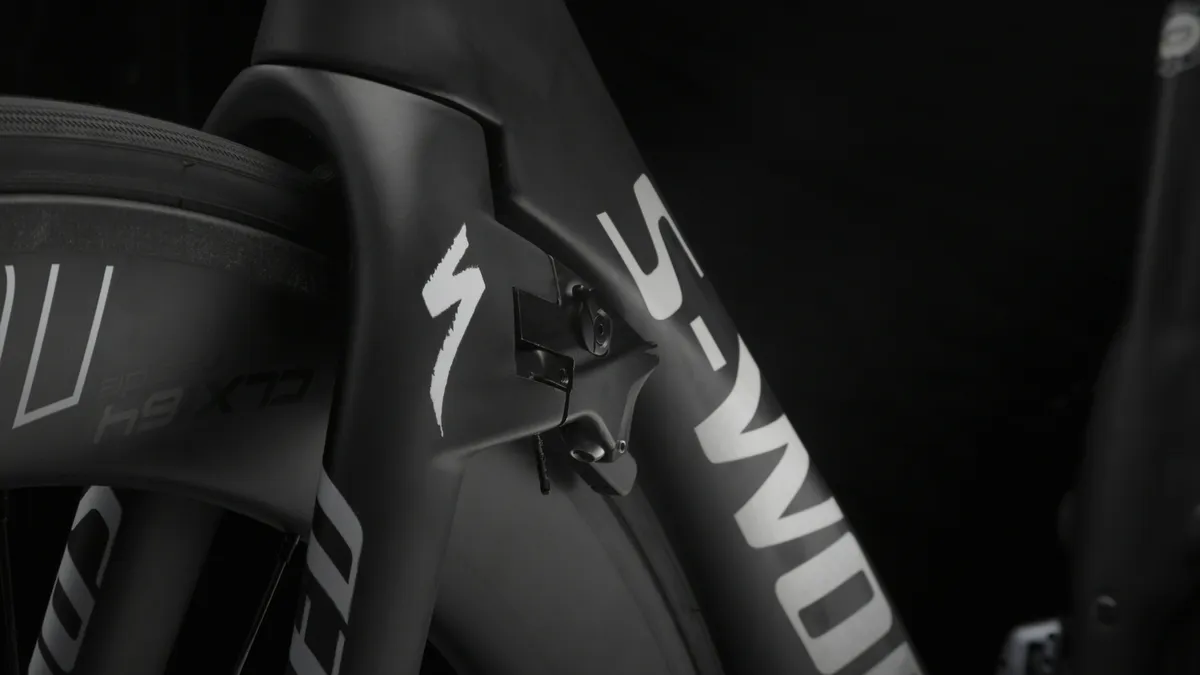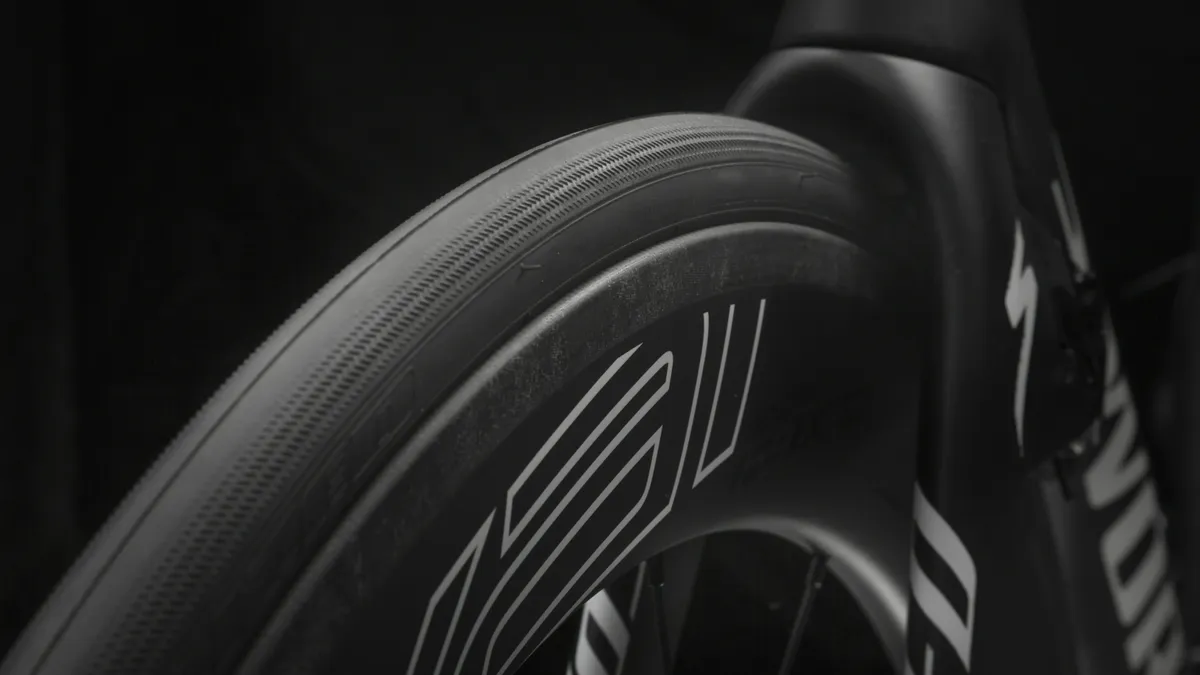Two minutes. That’s how much faster Specialized claims the new Venge ViAS is compared with a standard road bike over a flat 40km.
Tested to be a full minute faster than the previous Venge, the 2016 Specialized Venge features dramatic aero features such as a truncated head tube, an integrated low-riding stem, an elongated front brake mounted behind the fork and a rear brake tucked midway up the seat tube. Cables and wires are internally routed — even through the stem — and the tubeless-ready wheels are a bold depth of 64mm.
But perhaps the most dramatic thing about the new Venge ViAS is that it handles like a great road bike.
Built with massively deep Roval CLX 64 wheels, the Venge ViAS features highly integrated componentry — good luck raising or lowering that stem with spacers — but retains some everyday adjustability such as separate and therefore adjustable handlebar.
At 1,150g, the Venge ViAS frame is certainly not light. But after long-term modelling work with McLaren Applied Technologies, Specialized is highly confident that the massive reduction in aero drag will override the weight penalty for most riders in most situations in terms of overall speed.
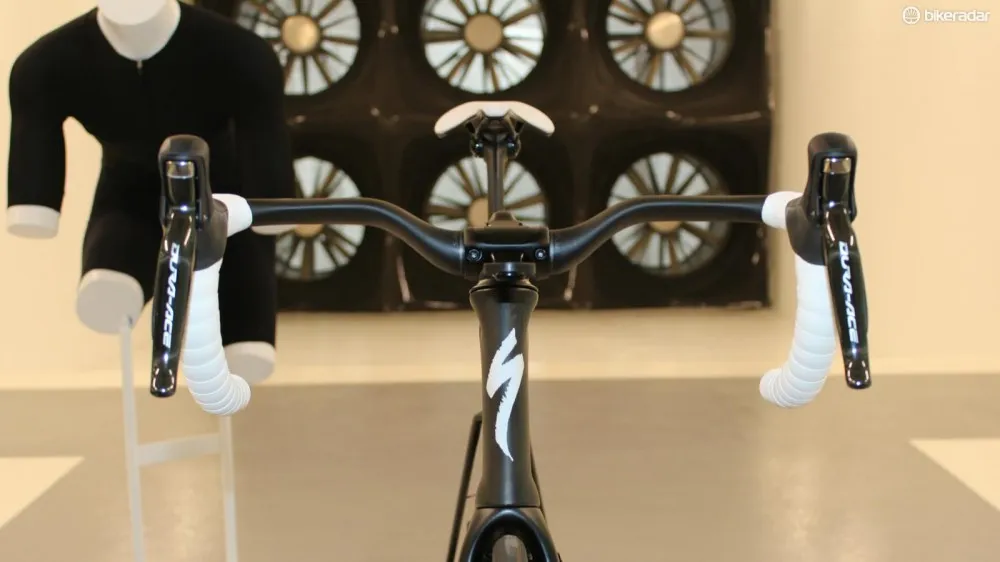
Recipe for aero: short, narrow head tube; narrow fork without caliper on the fork or inside the legs; dropped stem housing cabling; inline Garmin mount
Road bike handling, superbike drag
In overhauling the Venge, Specialized's designers decided to focus on making the most aero, best handling road bike possible. Freed from the “it has to be ultralight” mandate of most road bikes, Specialized designers, engineers and product managers like Chris D’Alusio, Luc Callahan and Mark Cote pushed the envelope.
The front end is nearly as stiff as the current S-Works Tarmac, and the bottom-bracket-area stiffness is higher than any Specialized road bike. With a longer seatpost than before, there is a slight increase in flex and thus comfort, though Specialized declined to quantify how much.
The dramatic look and dimensions of the frame, stem and brakes are matched by the rims, which measure a whopping 21mm internally and bulge to 29.9mm around the midpoint of the 64mm shape. The 22mm front and 24mm S-Works tyres measure a respective 24 and 26mm on the hyper-wide rims. As the S-Works are quite supple, this wide footprint makes for great handling with excellent traction and low rolling resistance. The wheels weigh a claimed 695g front and 850g rear — pretty light for such tall hoops.
But what about those brakes? Early aero road bikes were notorious for sub-par braking, as designers often compromised brake mechanics while chasing aero performance. Longtime Specialized designer Chris D’Alusio started tinkering with the Venge brake design years ago. Largely unconstrained by a weight target, D’Alusio was free to focus on aerodynamics and brake performance.
D’Alusio and Specialized studied wheel flex in relation to various points on bike frames in general, and found that there was more movement below the bottom bracket at above the seatstays than in between the two, where the Venge brake is anchored.
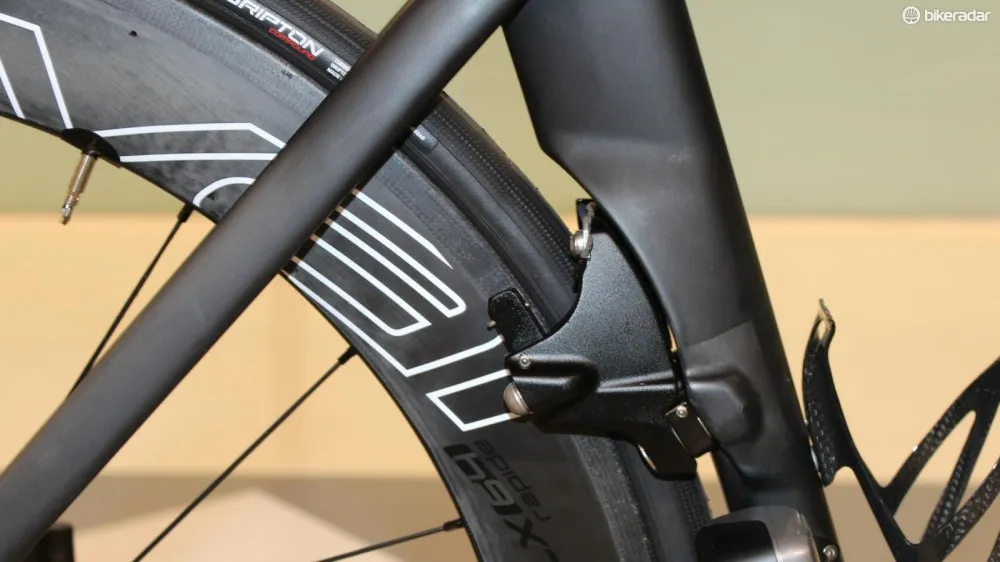
The ViAS rear brake pivots on two mounts protruding from the seat tube
Specialized aero engineer Chris Yu also pointed out that tunnel testing showed the under-the-chainstay brake location is not good for aerodynamics, as the down tube can speed up and funnel air through that area.
“We tested against [Shimano] Dura-Ace 9000 for feel, modulation and power,” D’Alusio said. “And the Venge ViAS brakes are right on par.”
In building the Venge ViAS, Specialized adopted a holistic approach. While one man’s integrated can be another man’s incompatible, Specialized decided the gain in aerodynamics was worth giving up some compatibility. Aero, non-standard seatposts are now common on road bikes, but integrated stems and brakes are a step further. Similarly, with the new Venge ViAS, the swooped handlebar is a requirement, too, unless you happen to want a really low bar position.
With all these integrated elements, the rider is locked into the system, so the system had better be pretty darn good. Specialized believes it is, and can point to reams of wind tunnel data to back it up.
Tunnel vision
Don’t believe it the time-savings numbers? Prior to 2013, Specialized designed aero bikes and aero equipment the way many other companies do — computer modelling for the initial design, then prototypes tested in a third-party wind tunnel paid by the hour. Two years ago, however, Specialized opened its own wind tunnel in Morgan Hill, California, and has since performed more than 1,600 hours of testing.
“We are fully friggin’ commited,”said Specialized’s Mark Cote, who helped bring the wind tunnel to life. “Aero is typically 80 percent of the resistance you face on a bike. It’s not just road products where we are studying aerodynamics. It’s e-bikes. It’s mountain bikes. It’s apparel.”
It’s hard to make generalizations about aerodynamics. By definition, the study is dynamic. But one rule holds pretty true; less frontal area means less drag. And less drag means more speed for the same effort. By effectively shrinking the frame, it isn’t a stretch to see how the Venge ViAS would be faster than its predecessor.
The front and rear brake designs resulted in no additional drag on the frame, Specialized claims, as the front follows in-line with the fork legs’ trailing edges and the rear is tucked behind the seat tube and, in real-world conditions, the water bottle.
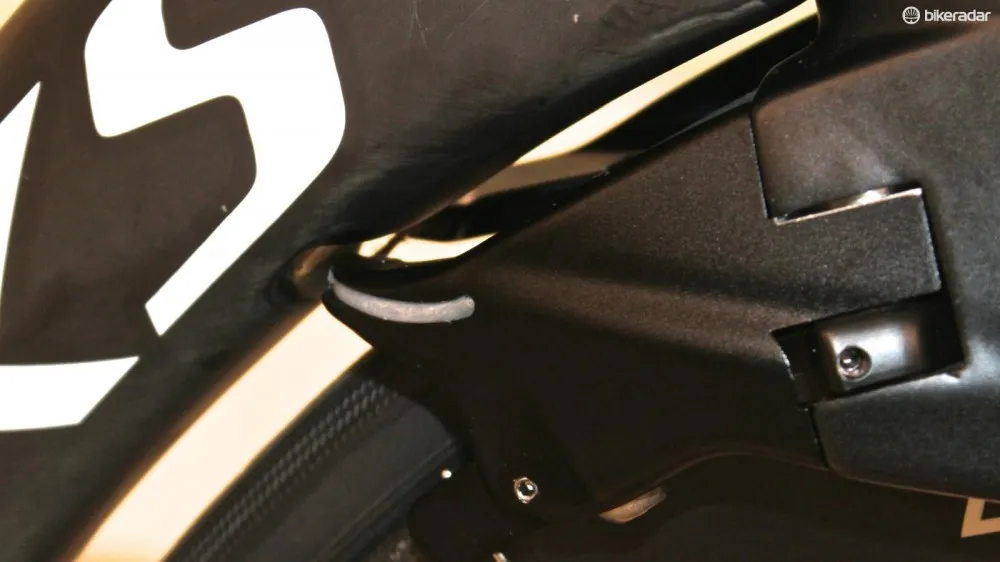
While cables might not seem like much, they certainly can increase drag on a bike, which is why you increasingly see them hidden away on time trial bikes. To hide cables and wires from end to end, Specialized employed wide headset bearings to route the derailleur and brake lines from inside the stem down into the frame.
Specialized claims that the new Venge is not only faster than all current aero bikes on the market, but has such low aero drag that it is in-line with the Shiv TT.
Fit + Retül interactive measurement chart
As with many TT superbikes, the Venge ViAS comes with fitting adjustment constraints. You can still achieve the position you have on your current bike, but you cannot just swap in different stems and spacers until you have your fit dialled. You have to get your fit exactly dialled first.
Specialized bought fit company Retül back in 2012, and Retül created a nice piece of software that can prescribe the correct Venge ViAS fit (including the critical stem length and height, plus one of four different setback seatposts) based on your current bike by doing a host of measurements.
While you can go into a Specialized fitter and get everything measured, the Retül software lets you measure your bike at home. Besides the standard saddle height and stack and reach measurements for the cockpit, there are also measurements like putting your back wheel against a wall and measuring from the wall to the bottom bracket, to the handlebar and more.
Regardless of how the fit is done, a fit must be done. With the unique design of the compression stem, this is definitely a case of measure twice, cut once.
While the bike design may eventually trickle down, for now it’s top-shelf only. The Specialize S-Works Venge ViAS Di2 complete bike will retail for US$12,500 / £10,999 / AU$15,499, with the module going for US$5,800/ £4,999 / AU$TBC.
